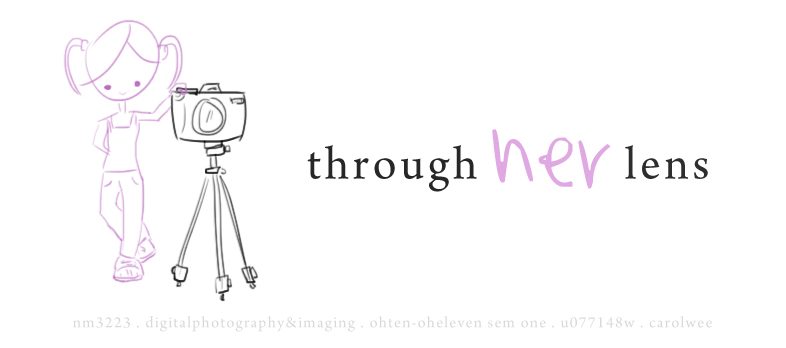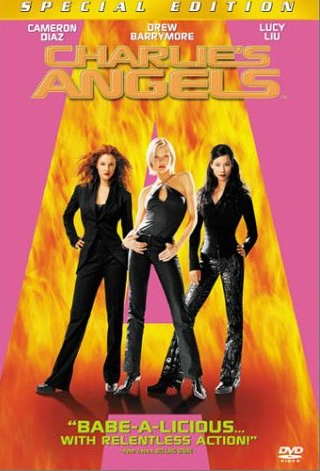And finally, all the hard work has paid off and I'm happy to present...............
But hold on!
I meant to say "my final portfolio", but it should be portfolioSSSSS instead.
It was a loooong story, but here was how it went:
I basically envisioned my portfolio to be in a photo-book format. However, being new to printing books, I didn't know where I could go to print photo-books and I had to take into consideration the time and cost factor. I was contemplating doing up the photobook through Apple's iPhoto and just send to Apple to print, but apparently it takes days/weeks to be delivered to my doorstep. So, it happens that I have a friend who is currently taking NM2208 and asked her for good printer options since she had already printed her storybook.
So.. I went about happily designing my book in Photoshop and when the day arrived for me to go down to the shop to get it printed, I was kinda dismayed at their range of papers (I used the most suitable that was available - slightly heavier than normal paper and with slight gloss). Afterall, they are a printing shop, not a photo-printing shop - this was a lesson I learnt. Still, I wanted to print my portfolio in hardcover so I just agreed to let them print.. As a result, I burnt a huge hole in my pocket.
As I went back home to mull over it, I realise some of the shots didn't turn out so well during the printing, which I thought wouldn't be a good idea to submit that and jeopardize my grades, hence I thought it better to print on photo paper instead. So, I went to Popular, bought 3 packs of photopaper and 3 ink catridges (and burnt another big hole T-T)....
But hold on!
I meant to say "my final portfolio", but it should be portfolioSSSSS instead.
It was a loooong story, but here was how it went:
I basically envisioned my portfolio to be in a photo-book format. However, being new to printing books, I didn't know where I could go to print photo-books and I had to take into consideration the time and cost factor. I was contemplating doing up the photobook through Apple's iPhoto and just send to Apple to print, but apparently it takes days/weeks to be delivered to my doorstep. So, it happens that I have a friend who is currently taking NM2208 and asked her for good printer options since she had already printed her storybook.
So.. I went about happily designing my book in Photoshop and when the day arrived for me to go down to the shop to get it printed, I was kinda dismayed at their range of papers (I used the most suitable that was available - slightly heavier than normal paper and with slight gloss). Afterall, they are a printing shop, not a photo-printing shop - this was a lesson I learnt. Still, I wanted to print my portfolio in hardcover so I just agreed to let them print.. As a result, I burnt a huge hole in my pocket.
As I went back home to mull over it, I realise some of the shots didn't turn out so well during the printing, which I thought wouldn't be a good idea to submit that and jeopardize my grades, hence I thought it better to print on photo paper instead. So, I went to Popular, bought 3 packs of photopaper and 3 ink catridges (and burnt another big hole T-T)....
 And voila!
And voila!That's to air out the printed copies. :)
 This is my two versions of my portfolios.
This is my two versions of my portfolios.The above is the one printed on photo papers, while the other one at the bottom is the hardcover version + lousy paper.
 Anyway, I submitted both because I wanted to show the actual 'book mechanism' I had in mind.
Anyway, I submitted both because I wanted to show the actual 'book mechanism' I had in mind.I had wanted it to be landscape.
 However, for this file portfolio version, I can only flip through the file like this (i.e. at the longer edge rather than the shorter edge).
However, for this file portfolio version, I can only flip through the file like this (i.e. at the longer edge rather than the shorter edge). As you can see, I have initially intended for my designs to be printed into a book, therefore I had edges of my designs left blank so as to accomodate the edges that will be stuck to the binding.
As you can see, I have initially intended for my designs to be printed into a book, therefore I had edges of my designs left blank so as to accomodate the edges that will be stuck to the binding. This illustrates the difference in quality.
This illustrates the difference in quality.The one on the left is printed on photo paper (much clearer) while the one on the right is on normal paper (a lot more artifacts/noise).
So this concludes the end of my workload for this module.
During submission, I saw a few portfolios which were carefully crafted as well.. I believe everyone has put in devotion and hard work into this module and I hope everyone does well!
I have really learnt alot during this module and I had definitely enjoyed myself.
During submission, I saw a few portfolios which were carefully crafted as well.. I believe everyone has put in devotion and hard work into this module and I hope everyone does well!
I have really learnt alot during this module and I had definitely enjoyed myself.























